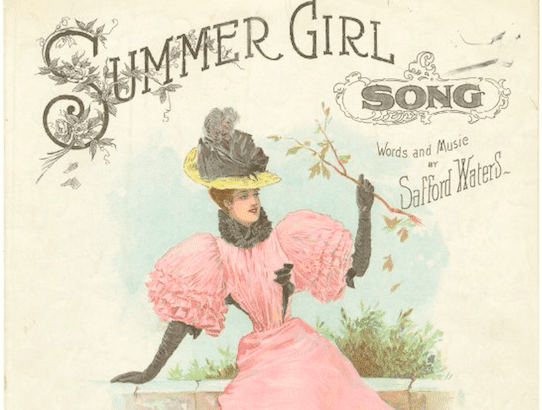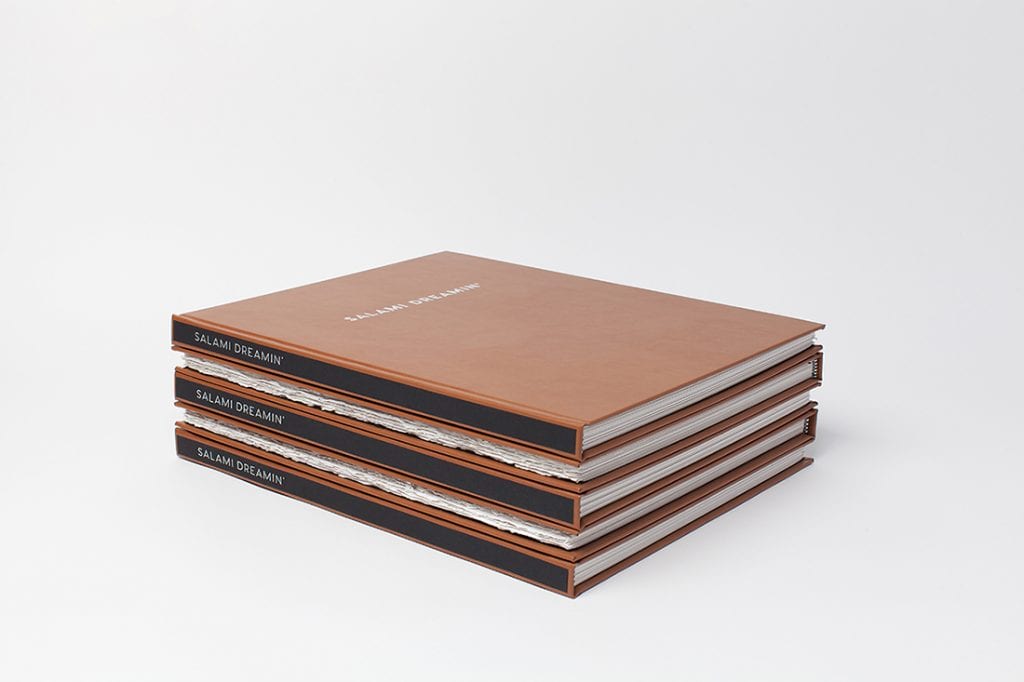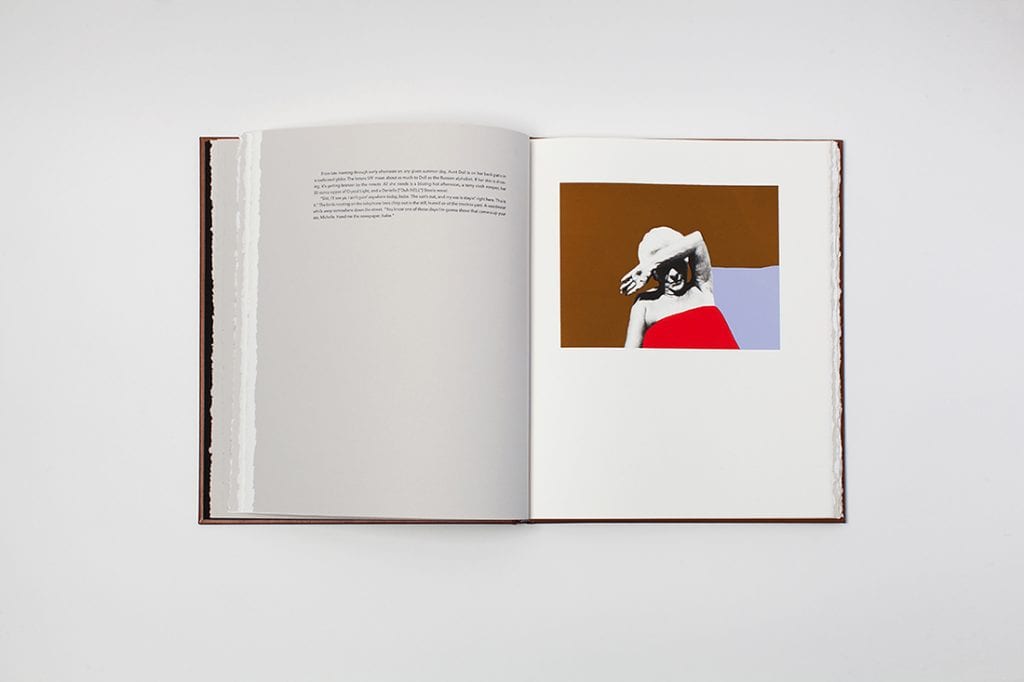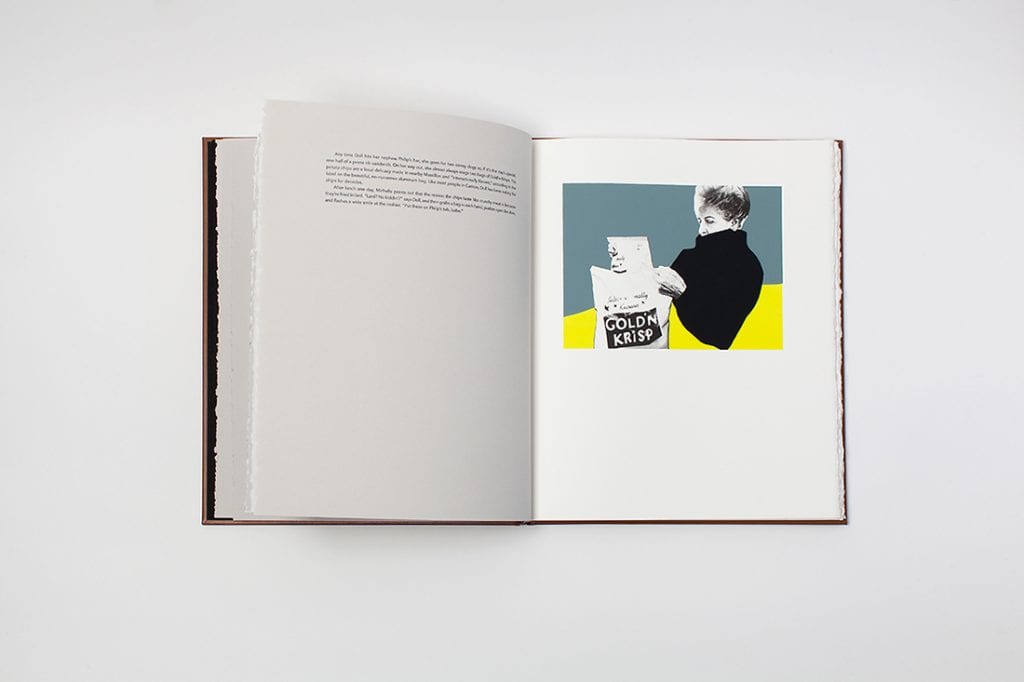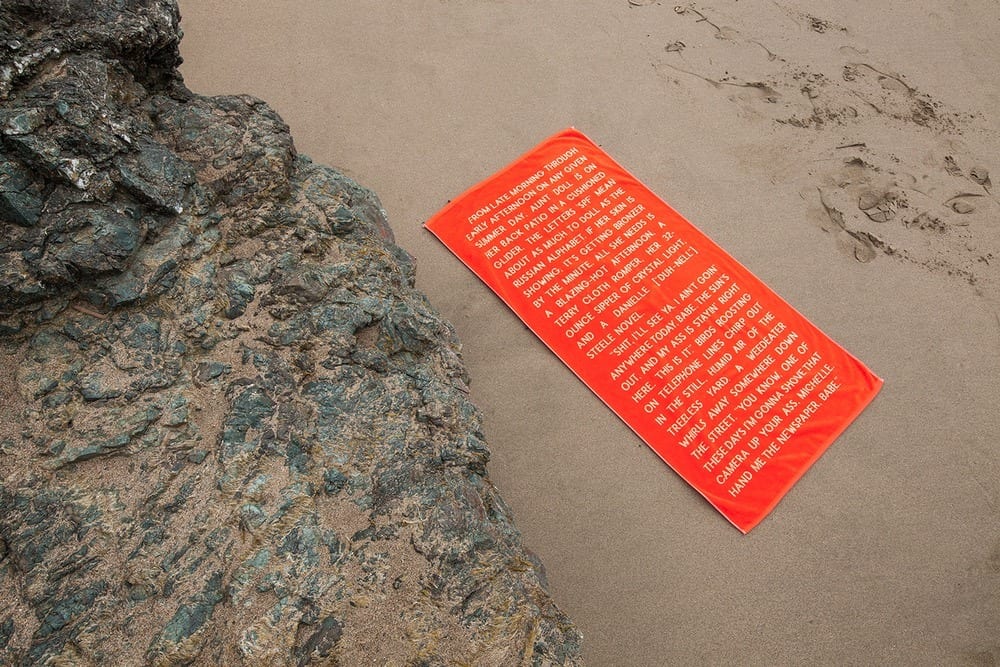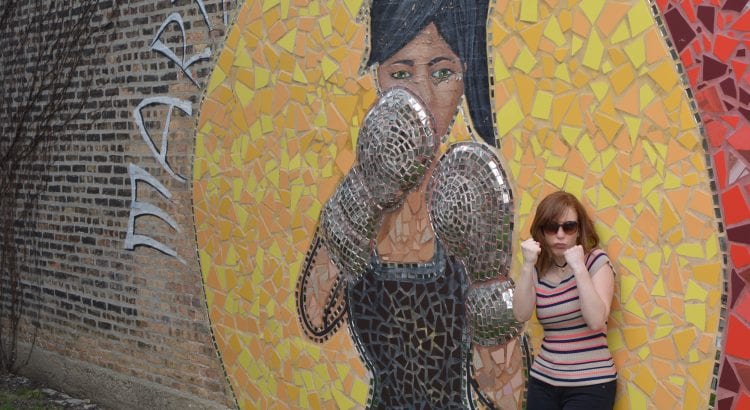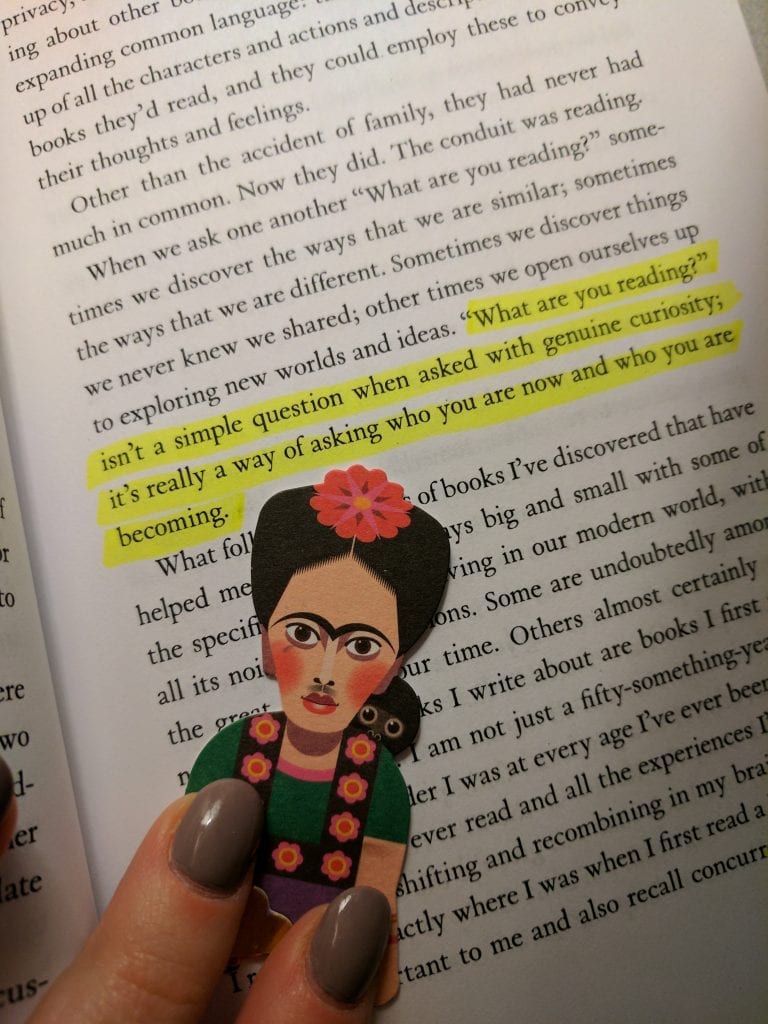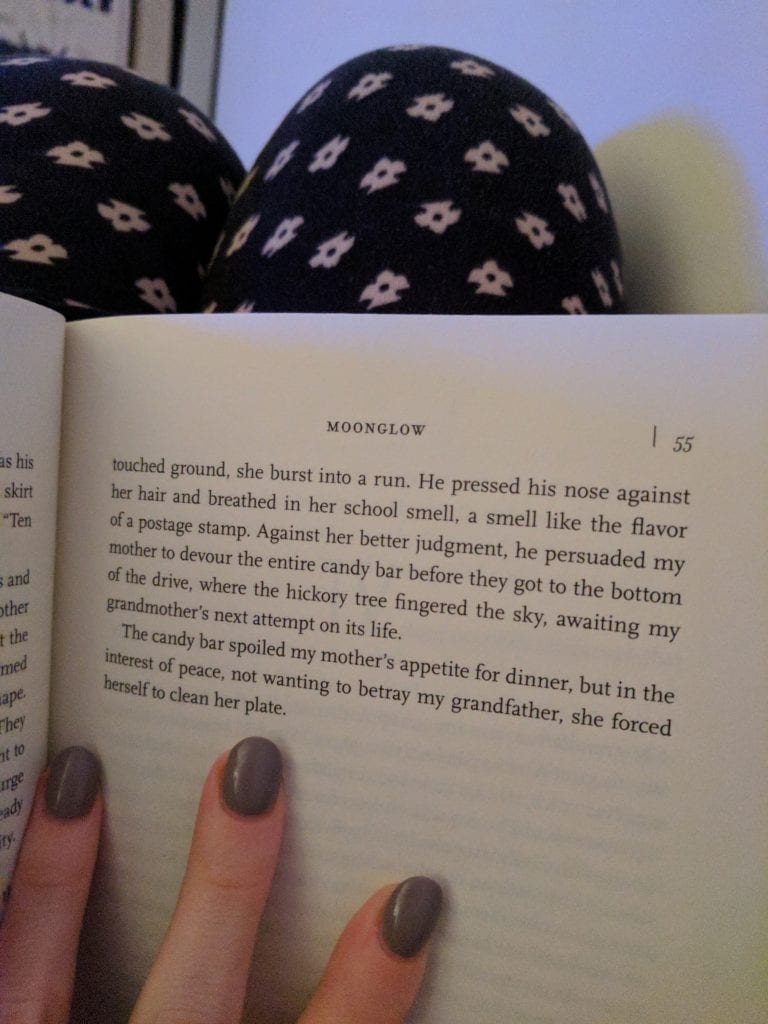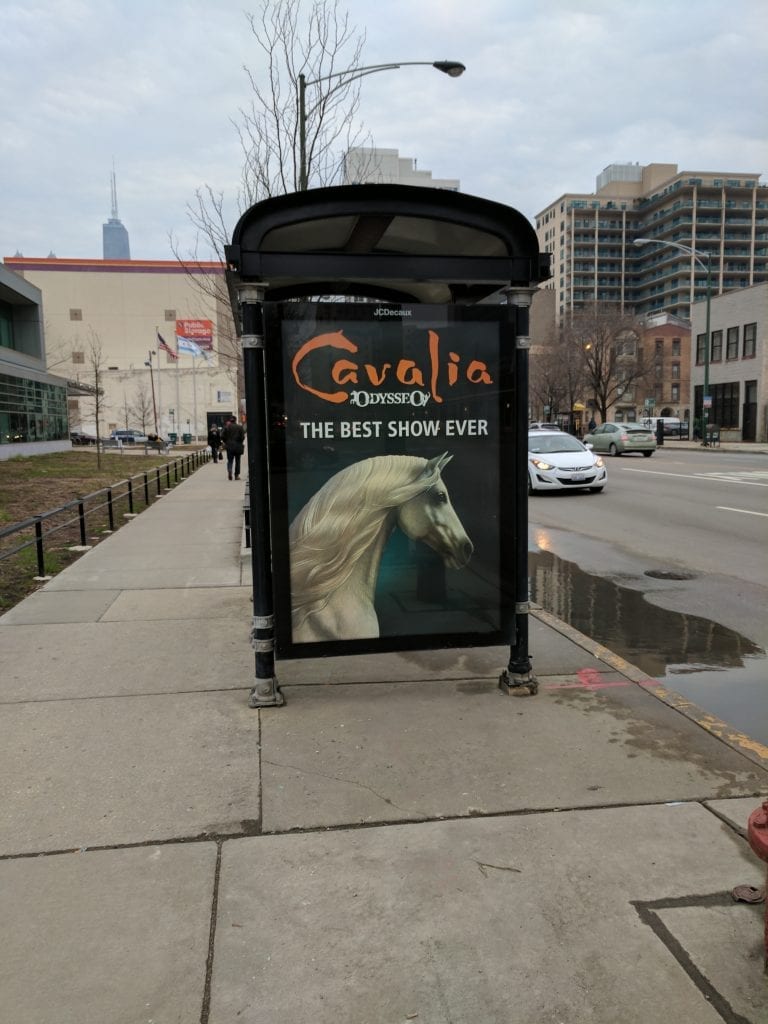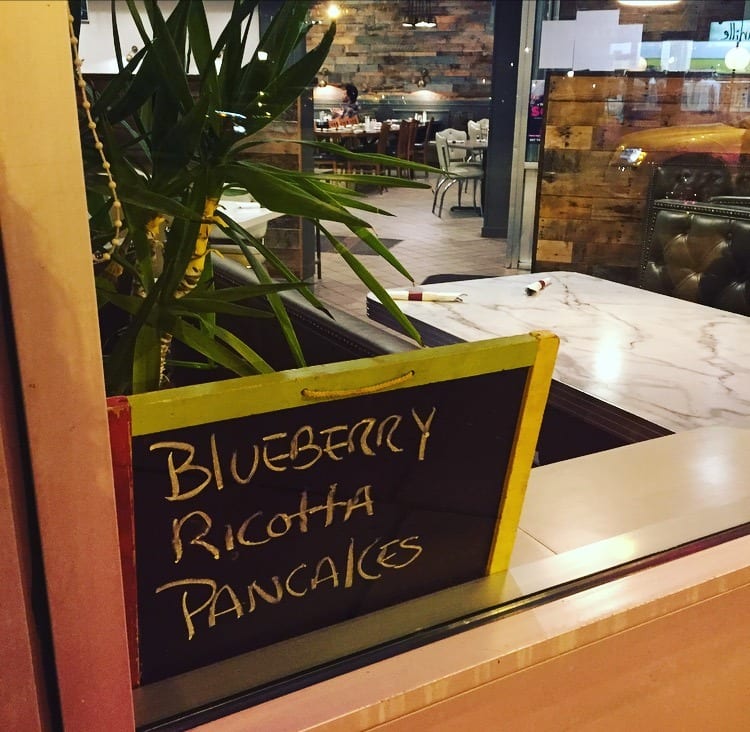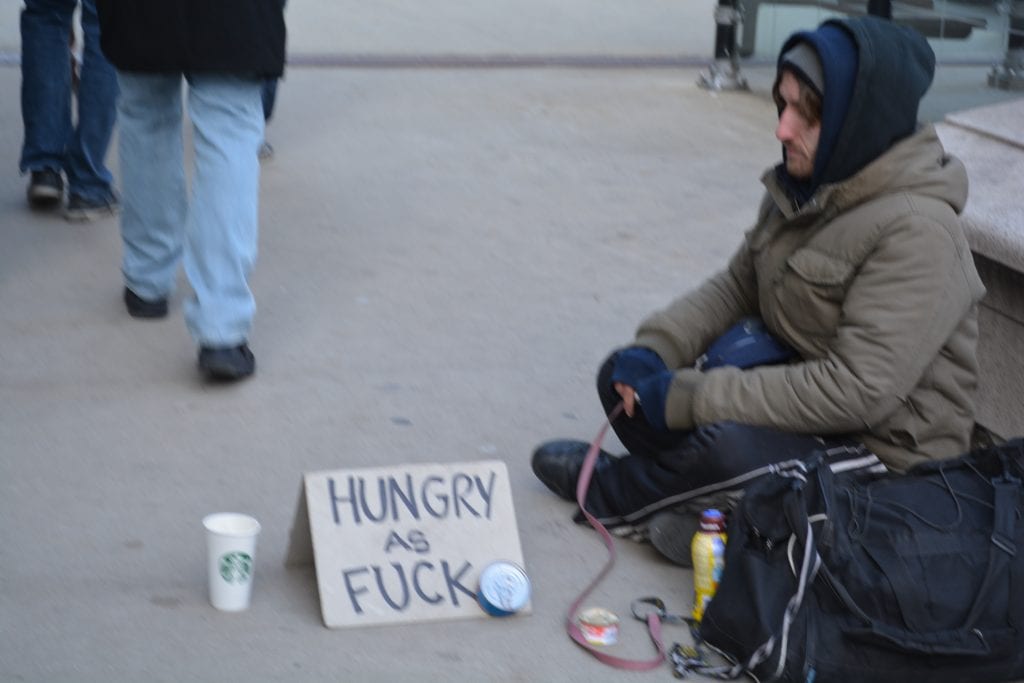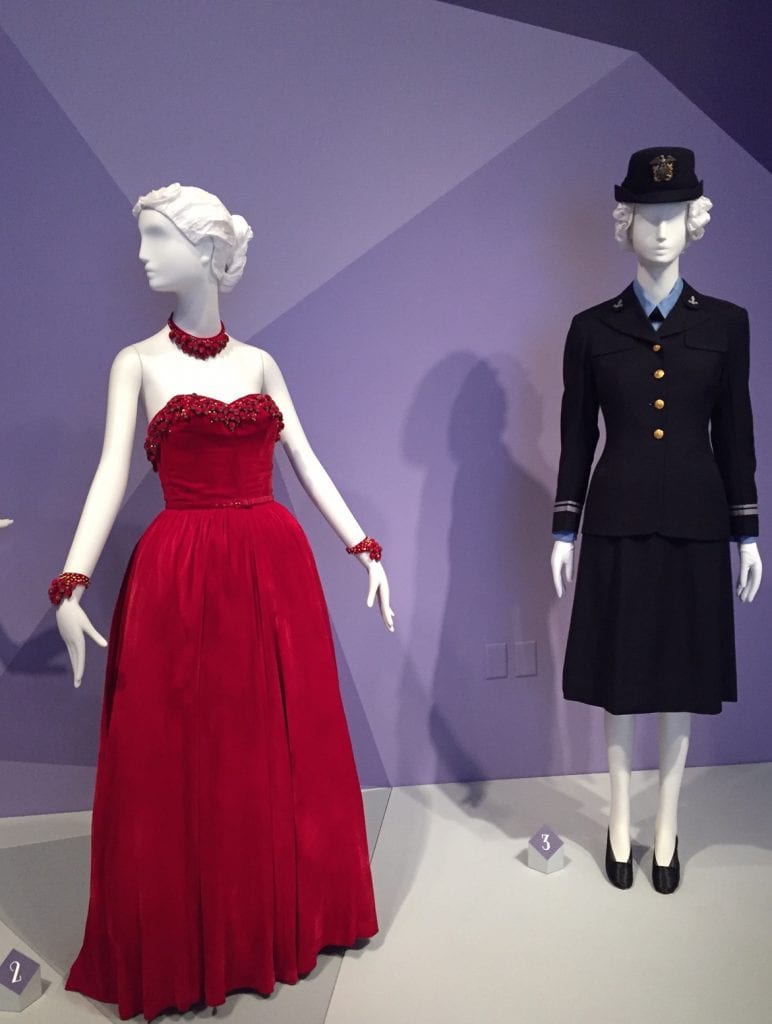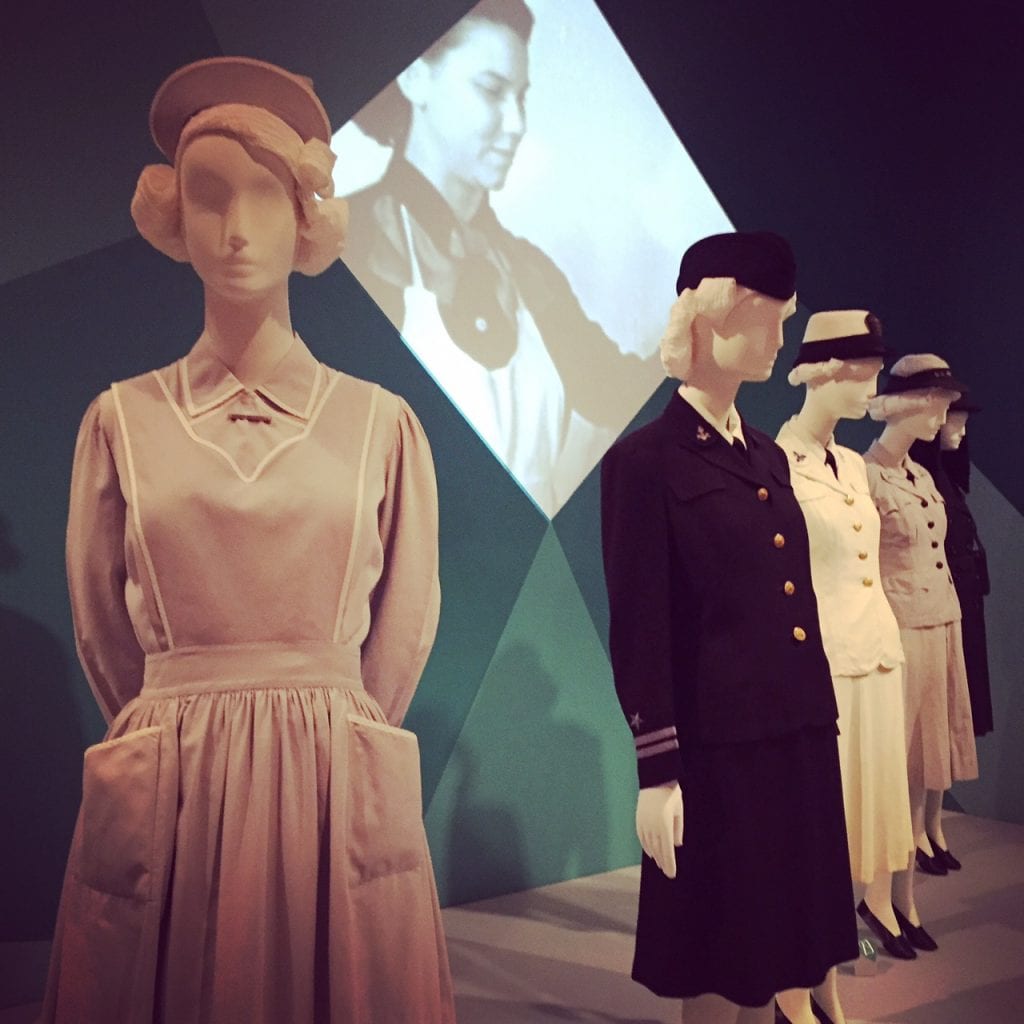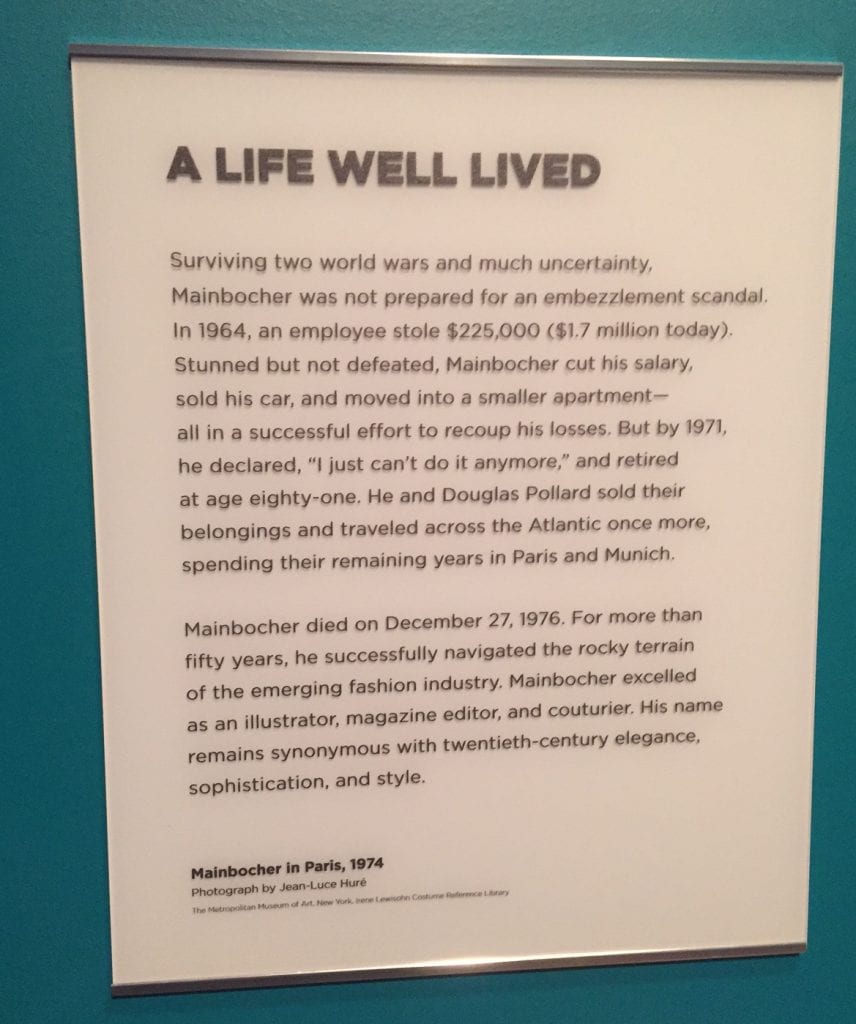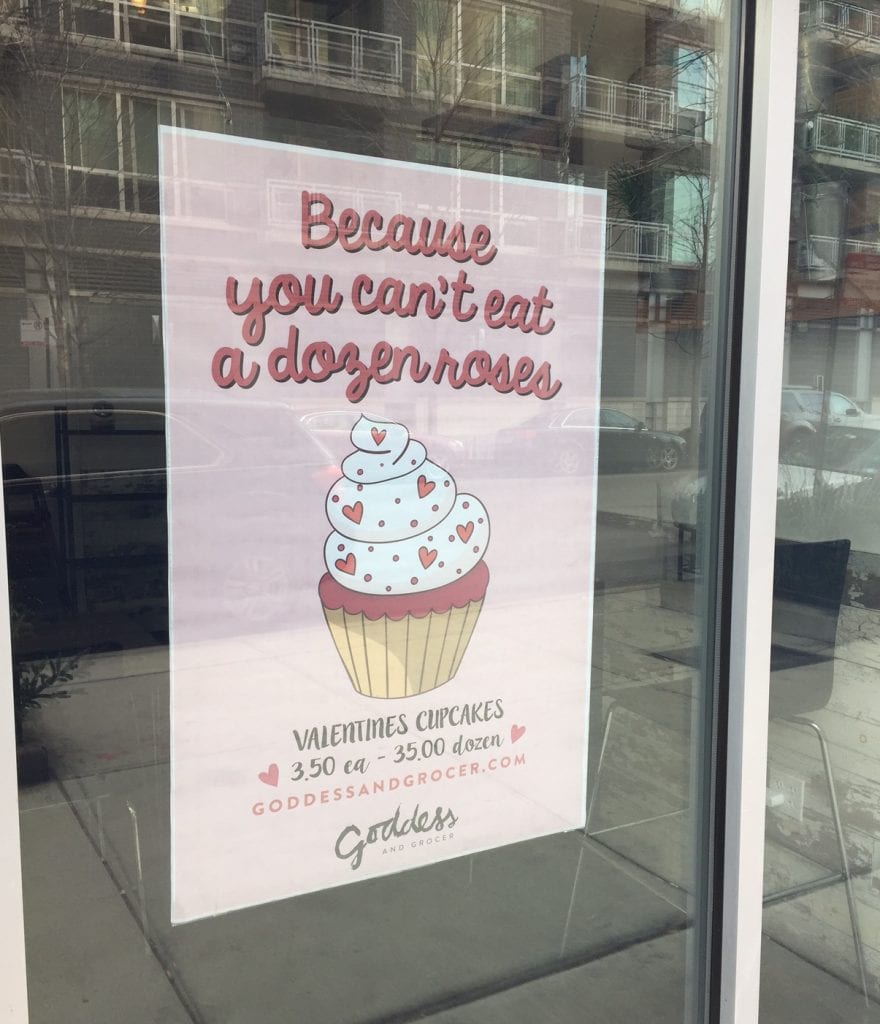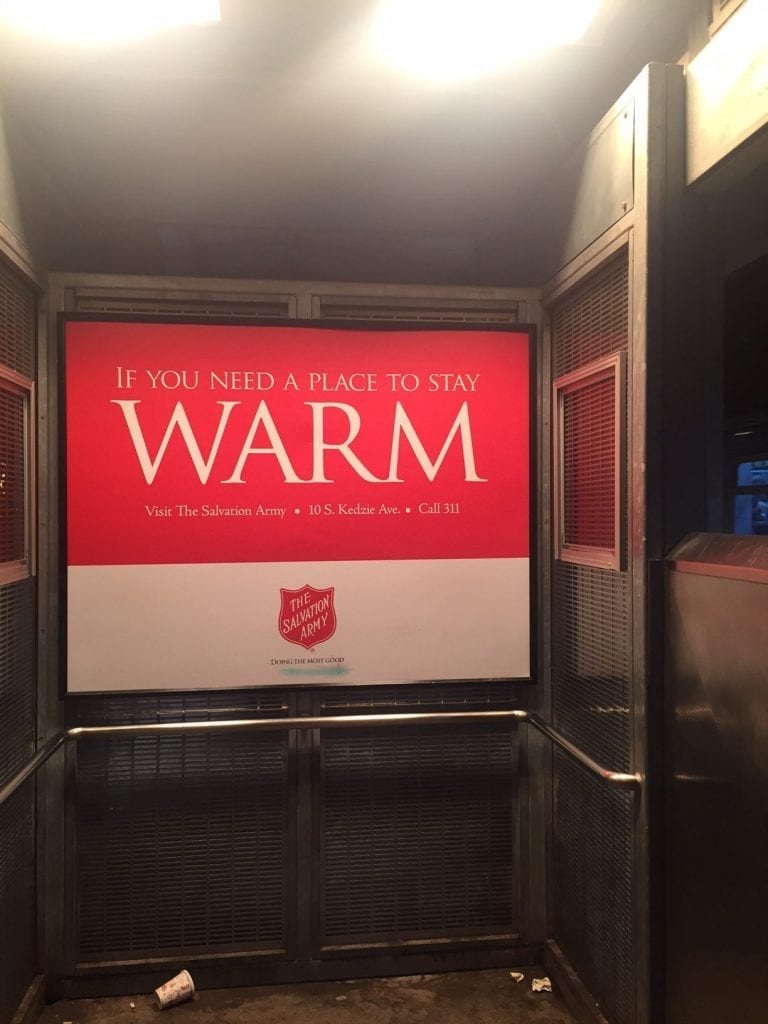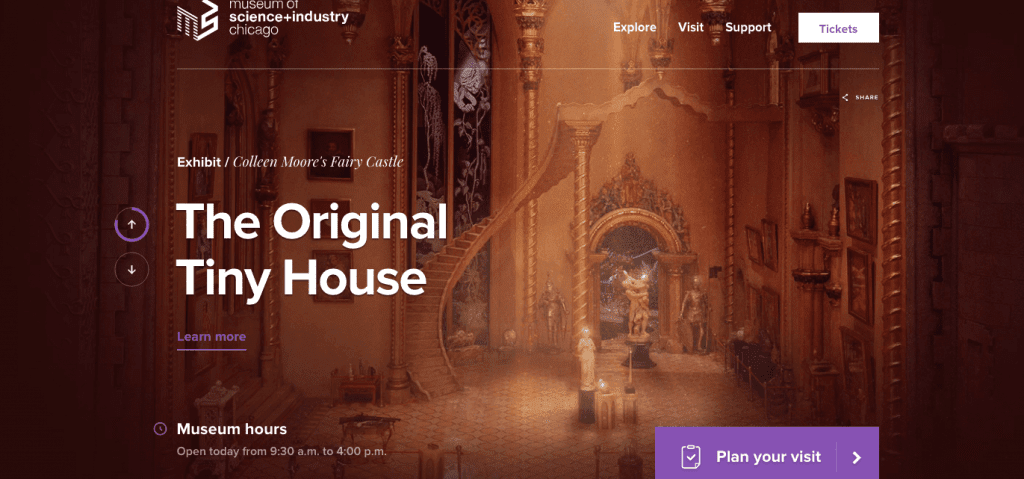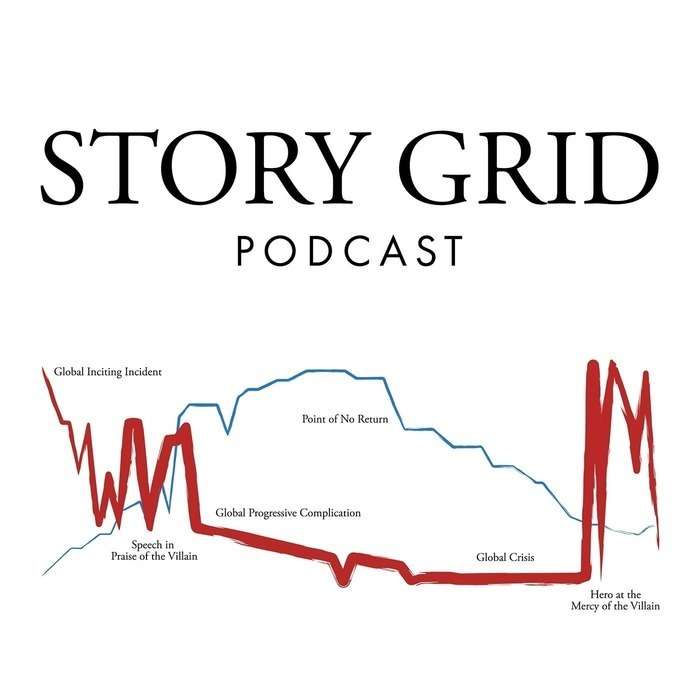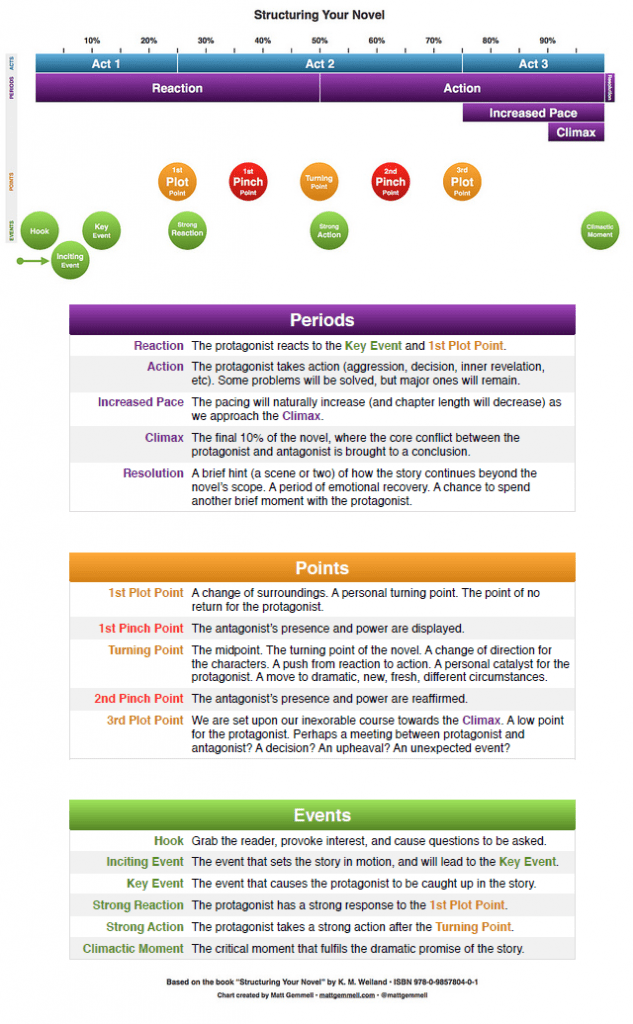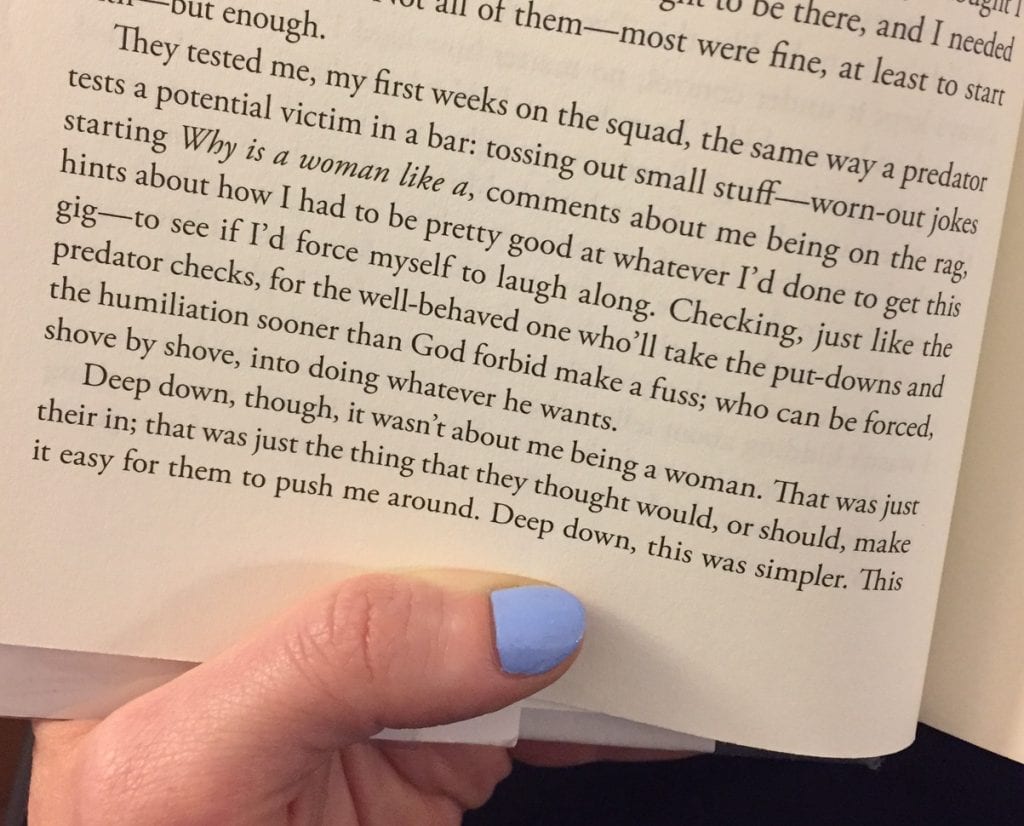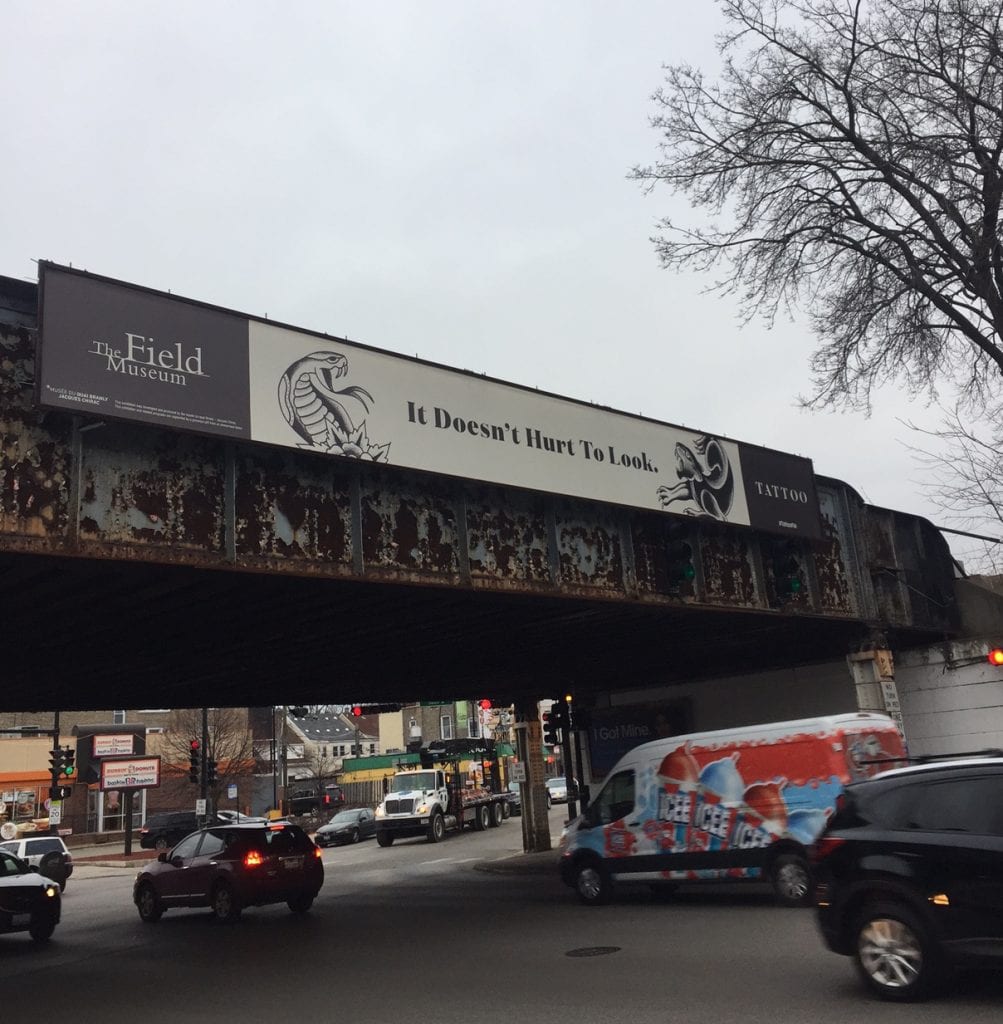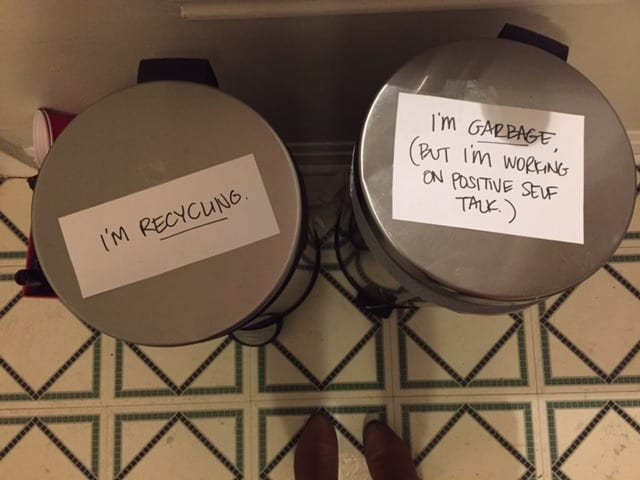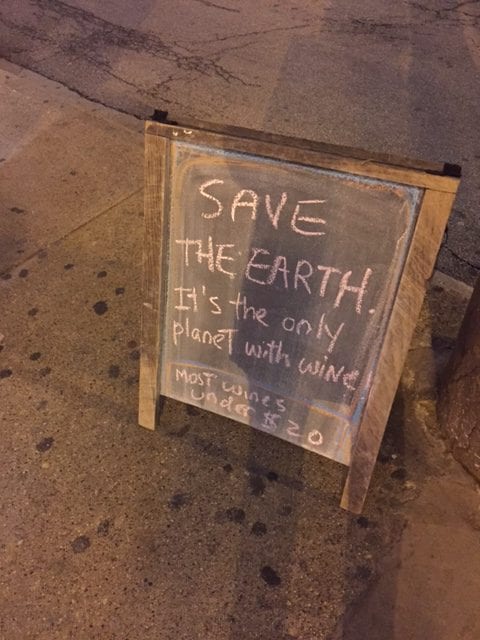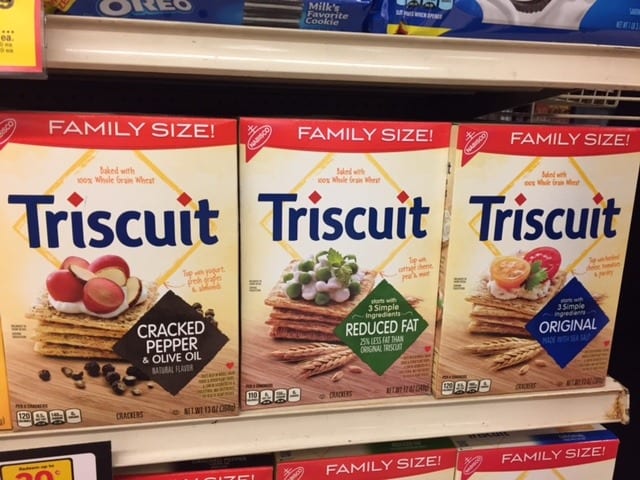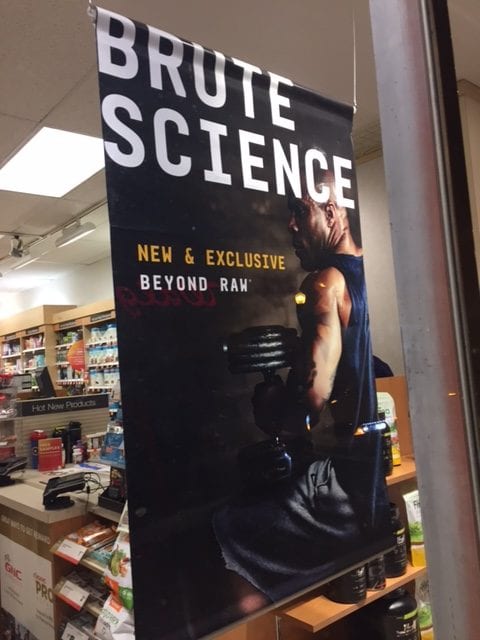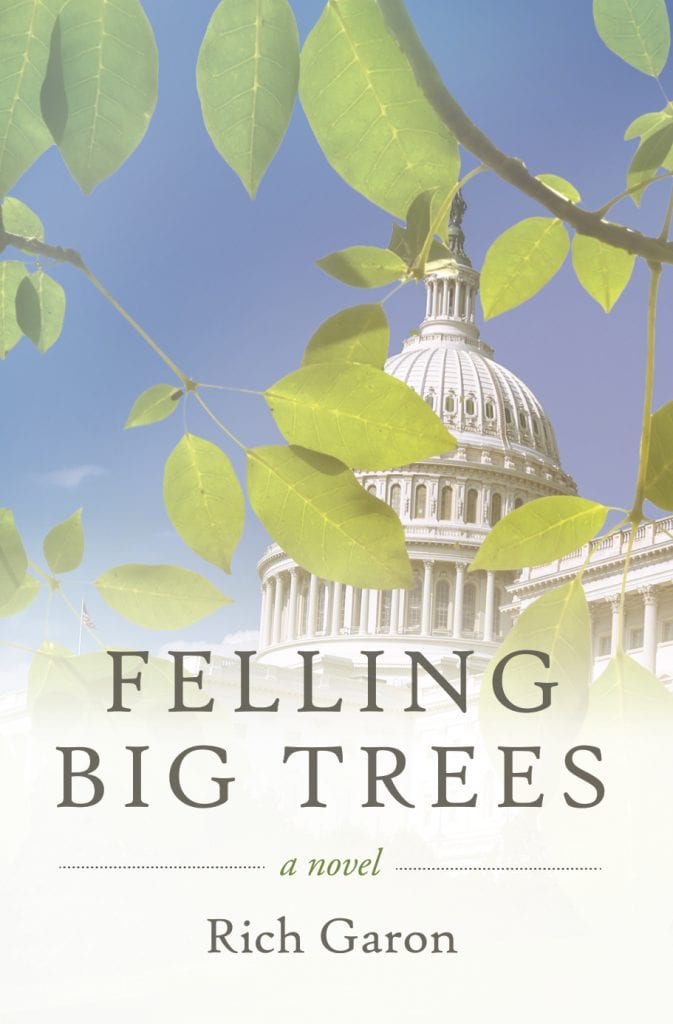I plan on spending plenty of July and August languishing on a Chicago beach or passing the hours on a blanket at the park. In my bag will be SPF 90 (ginger life!) and a book or three. Here are a few I hope to re-read and why they’re perfect for a slow sunny day outside.
Category: General
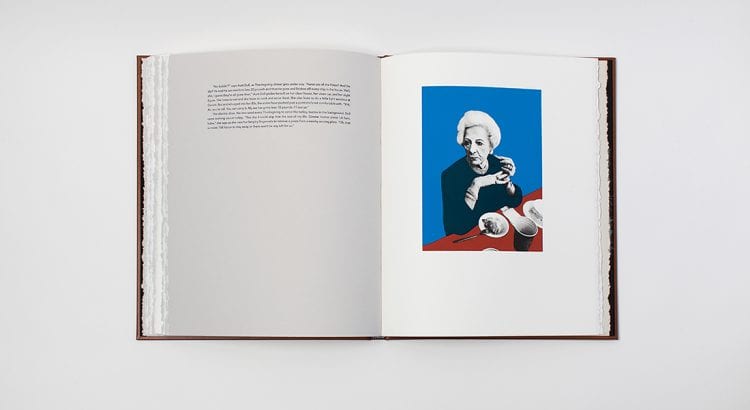
Interview: Artist Michelle Maguire
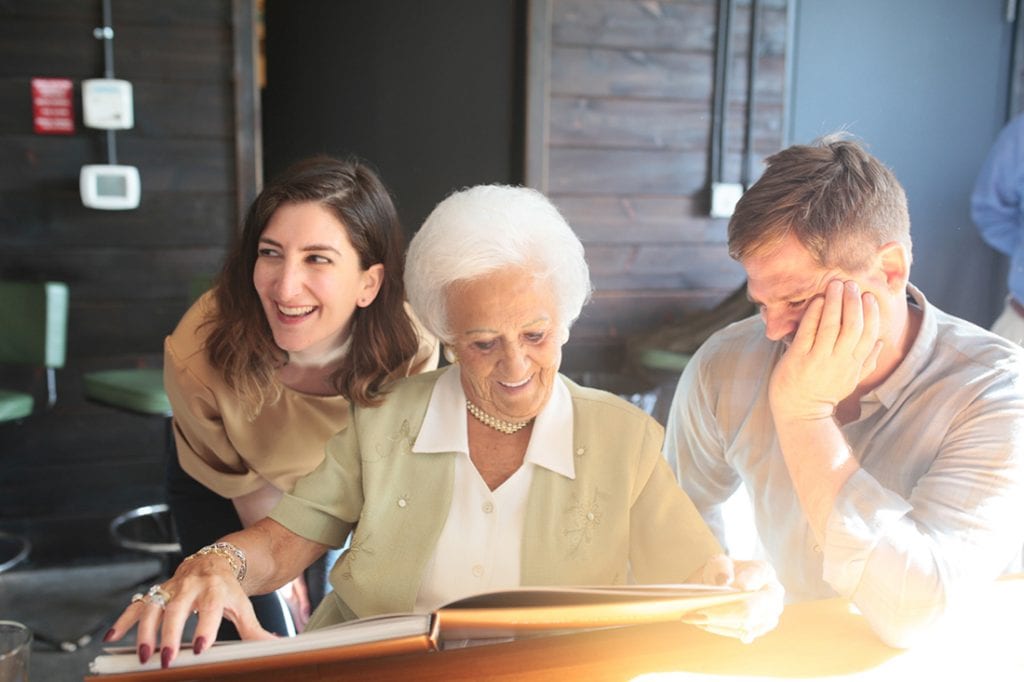
Ever notice how the people who are the “characters” in your life (ie. “She’s a real character, that one!”) are considered so because they refuse to live in our reality?
I love those people, “characters” — when it’s genuine, it means they’re brave enough to construct their own world and define how they live in it.
Artist Michelle Maguire’s Great Aunt Doll is one of those people.
Aunt Doll has lived in Canton, Ohio, all 85 years of her life. She’s Italian American and easily unimpressed.
“She cusses, loves cured meats, knows more about the NFL than you do, plays strip mall slot machines with her vegetarian hairdresser of 42 years, isn’t trying to be funny but is, worships the sun from her concrete-slab patio, and frets about nothing except her beloved Italian bread packing on the pounds,” Michelle says. “Aunt Doll makes the most if it.”
And Michelle made the most of her relationship to this potato chip queen in Canton by making a limited-edition book that chronicles her time with Aunt Doll.
Titled “Salami Dreamin’”, it compiles lithography and silkscreen-printed images of Aunt Doll doing daily life things. Michelle’s application of color in these images is engrossing and almost crass, perfectly befitting a woman that makes “Fuck it” feel like a rallying call to arms to live life to the fullest — whatever that means to you. On the white backdrops, Aunt Doll’s life pops, just like her.
With each of Michelle’s carefully crafted images is a letter-press printed anecdote by writer Aaron Beck. It’s here we hear the sizzle of a tongue tested and triumphant in telling the truth.
For example, on a gorgeous day spent in the sun:
“I ain’t goin’ anywhere today, babe. The sun’s out and my ass is stayin’ right here. This is it.”
Humor aside, what strikes me about Michelle’s work is her eye for finding something most of us wouldn’t see in a moment (alas, like an artistic version of her beloved aunt). The scenes of “Salami Dreamin’” push through the brazen nature of the character and give hints of everyday human experience, even for our favorite “characters.” Doll’s snacking, reading the paper, or simply just hanging out.
In these moments both she and the artist watching her find peace in the simplicity of just living. There can be optimism and beauty in monotony… if you just shut the fuck up and let it happen.
You can check out more of Michelle’s work here. (Her most recent series “Wardrobe Snacks” with photographer Kelsey McClellan is totally binge-worthy.)
As for “Salami Dreamin’”, a copy of the book is now in the permanent collection of the School of the Art Institute of Chicago’s Joan Flasch Collection. It’s open to the public so you have no excuse not to go meet Aunt Doll.
“The gist of her story,” Michelle says: “Enjoy every chicken wing while you holler at the Cleveland Browns on your gigantic analog TV, because we aren’t here forever.”
Enjoy every chicken wing while you holler at the Cleveland Browns on your gigantic analog TV, because we aren’t here forever.
How did you make the actual physical book? Why put it together into a book?
For most of my adult life I’ve documented certain members of my family. Aunt Doll is one of Aaron’s and my all-time favorite people, so we hang out with her pretty much every chance we get, most typically in her Canton, Ohio home. For years I’d take still photos of her, much to her annoyance, while a tiny video camera rolled away in the background – both devices simultaneously capturing mundane and domestic goings-on, and creating an automatic transcript of her hilarious dialogue. I did this only to document and preserve her for myself; the idea to take all of the material and turn it into something came only after we realized how much I’d gathered. So I started to explore what it would mean to turn it into a book.
I’m a librarian in the Department of History of Art at The Ohio State University, so I’m lucky to be surrounded by so many wonderful resources, including printmakers and bookbinders. I began asking friends and colleagues around campus who to talk to, and pretty soon had assembled a wonderful crew of people to help me bring the book to life. What that series of photos and video evolved into has been the most rewarding and challenging project I’ve ever taken on.
How long did Salami Dreamin’ take to make? Were there ever any moments where you felt discouraged or like it wasn’t worth it? If so, what caused those moments and how did you work through them?
Production took a team of 6 people (including myself) with full-time jobs a year and a half, from making mock-ups, to cutting down paper, to mixing inks, to printing, to building and sewing the book. Fifty-five times! It was an enormous undertaking. That’s major dedication by a bunch of skilled, talented, obstacle-tackling people who didn’t even know me prior to this book project. I am forever in their debt.
There were many moments where every one of us felt overwhelmed, like the times when a layer of a print would be a real bastard registration-wise, which was nerve-wracking and caused me to repeatedly question why I created artwork with zero wiggle room. Edition bookmaking is no small task. It definitely made me sweat but it always felt like it’d be worth it.
How did you collaborate with a writer/Aaron? Did the artwork come first or did you two work in tandem?
We were together the entire time the footage and images were being recorded, so it felt only natural to work as a team to tell her story. Collaborating with Aaron was great. I knew if he was going to be involved that it would be funny and thoughtful and full of wonderfully vivid descriptions, perfectly conveying the essence of Aunt Doll. He really nailed it.
Any advice for readers looking to self-publish or make a book?
Go for it! And don’t be in a hurry.
What moves you to make art?
I feel my best and most alive when I’m making something. It’s how I respond to everything, it’s how I most naturally connect with people, and it always leads to new things.
My dad died unexpectedly almost 5 years ago, and since then that compulsion to create has become amplified. My dad was an autobody man. He spent 40 years smoothing, buffing, and painting banged-up cars. My drive and focus to work with my hands was passed down from him, we just have different applications. I love sharing that ability with him. He relished hearing about whatever I was working on, and I could hear his words of amazement throughout the entire book-making process.
It helped me move through grief.
What has been inspiring you lately?
We just took a trip to San Francisco and its coast to the north and south, so, rocks! Both in landscape and on architectural facades. The former are rugged and massive and make me feel tiny and insignificant; the latter make me feel like Fred Flintstone. I love both.
What are you working on now?
I just worked with a factory in North Carolina to create a batch of machine-woven Salami Dreamin’ beach towels! [Editor’s note: OMG they’re perfect. Order one here.]
Summer’s right around the corner.
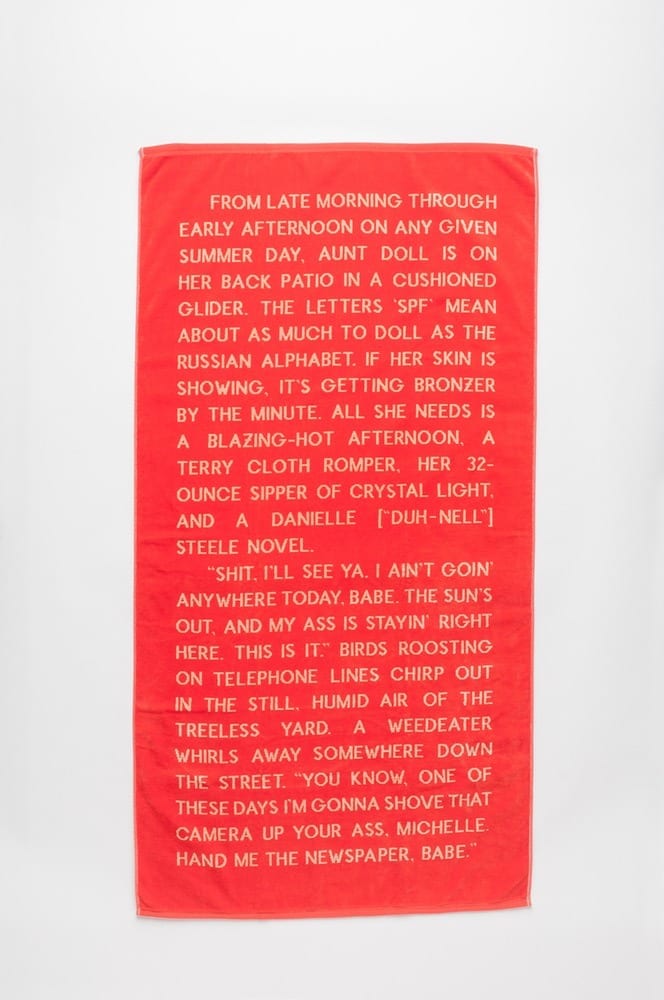
How do you stay focused when you’re working on a project?
I listen to music, I stay well-fed. I also step away pretty often – to eat and run around the block and re-group. Forcing an idea or a task leads to nothing, so I take frequent breaks and change up my environment, in hopes of inviting other inspiration or a new strategy to seep in.
If you could invite three people to a dinner party, living or dead, who would they be?
Errol Morris
Mike Judge
Sade
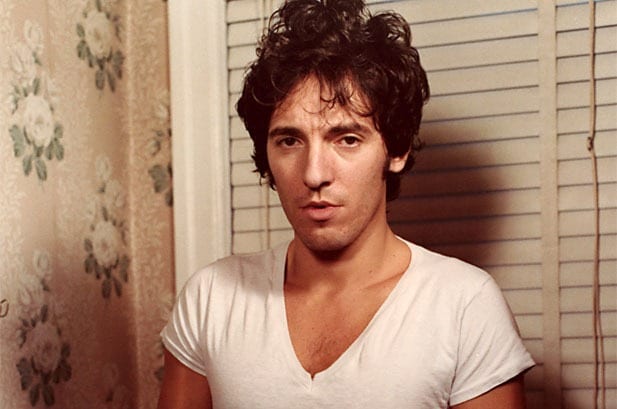
Inspo: A poem, a song and words on the street (airport edition)
Here’s a look at what’s been inspiring me this week. Not included: all the Springsteen image searching I did for “research.”
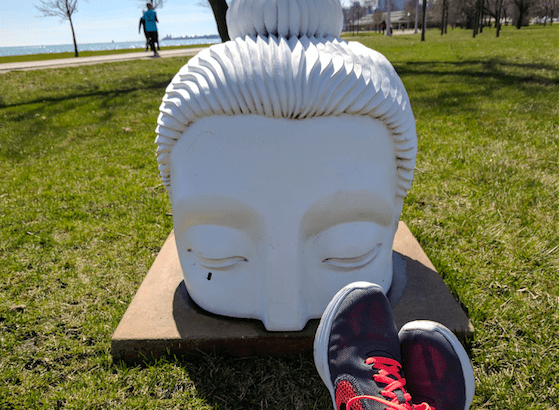
Inspo: A writer’s podcast, new books, and words on the street
“10 Minute Writer’s Workshop”
This podcast published by the New Hampshire Public Radio is my new commute boost. It’s exactly what it sounds like: 10 minutes of writer talk. Each episode features a brief interview with a writer — from an LL Bean catalog writer to a best selling novelist to a TV screenwriter to Patti Freaking Smith — where they ask questions like “What’s your writing routine?” and “Dear god, how do I get as prolific as you?”
My favorite so far has been the interview with short story writer Ottessa Moshfegh.
On getting off social media:
“I think privacy and self protection from the garbage all around us is really important to a writer, especially starting out, when you don’t have those natural filters.”
Check out all the episodes here.
New books
This book, “Books for Living” by Will Schwalbe, was a gift from my brother, a librarian in Ohio. The book is a compilation of essays about Schwalbe’s favorite books and what he has learned about life from each of them. It’s a wonderful reminder of why reading is so, well, also wonderful. It’s always interesting to hear why someone likes a book you also liked and see how they got something different out of it than you did. Shout out to my BFF for the sweet Frida birthday bookmark. Do my people know me or what?
This one’s a library rental so I can’t highlight, but how real is this:
“He pressed her nose against her hair and breathed in her school smell, a smell like the flavor of a postage stamp.“
Michael Chabon’s “Moonglow” is full of showstoppers like this. It’s why he’s a giant.
I wish to swim in all his sentences.
Words on the street
Sometimes the truth is louder as words. Here’s to basic, bold statements…
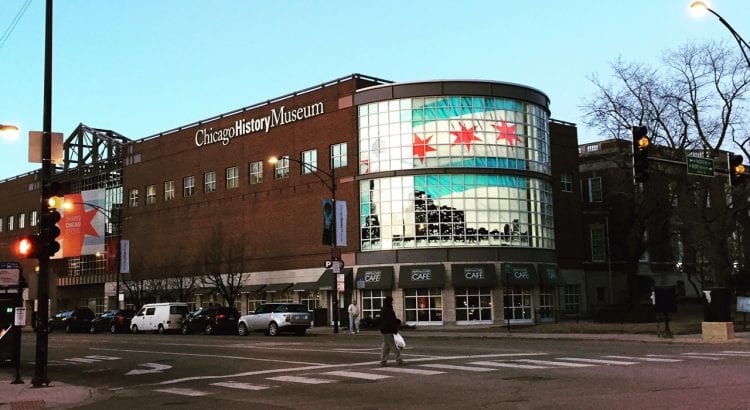
Inspo: Making Mainbocher, “LaRose” and words on the street
Mainbocher exhibit at the Chicago History Museum
Mainbocher was a Chicago boy who eventually became America’s first couturier. (Couturier is a word I had to Google before I went to this exhibit and it means he was America’s first “fashion designer who manufactures and sells clothes that have been tailored to a client’s specific requirements and measurements.” But not, like, clothes for the basic classes. Think more like Gloria Vanderbilt, of whom he was a fave.)
Mainbocher’s also famous for designing for the Girl Scouts and the uniforms for the WAVES, the volunteer women’s naval reserve of WWII. The WAVES were the first military women to be paid the same as their male counterparts, and part of the appeal of being a WAVE was getting a tailor made designer uniform, which sounds kind of dumb now but was a big deal post-Depression, pre-fast fashion.
Mainbocher didn’t want to be paid anything for these designs, considering it part of his duty as an American. However, all government contracts required payment of some kind. So Mainbocher charged the US Navy exactly $1.
The Chicago History Museum’s “Making Mainbocher” exhibit included a one-night showing of “Homefront Heroines: The WAVES of WWII,” a documentary with interviews starring these interesting women and incredible old footage from their training and work. I loved hearing about what drove them to volunteer for the WAVES–a need for adventure, a sense of independence, a longing to see more than their hometowns, a want for life beyond desk or house work. The strings that pulled them then seem like the same kind wrapped into women like me decades upon decades later. Beyond admiring them, I get these girls.
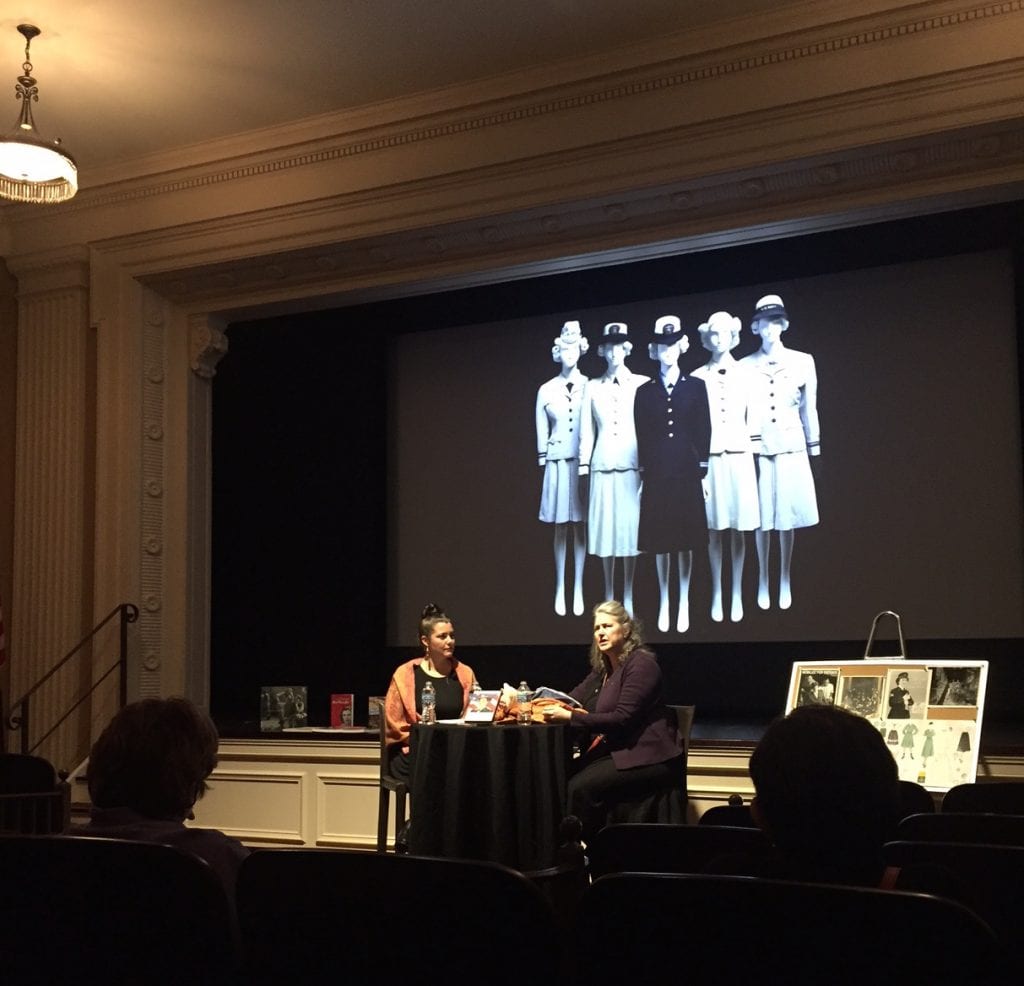
“LaRose” by Louise Erdrich
Currently reading: “LaRose,” the aching story of two families affected by one tragedy and an old native American tradition that might help them heal. Erdrich is a fantastic writer, obviously, and I’m so moved by the way she’s able to make transitions in this novel. I feel like I’m in a dream when I’m reading–or a nightmare, maybe, considering the story. There’s a lot of dialogue, but she never uses quotes, which adds to the steady but unusual flow of things.
While researching the bookstore she runs with her daughters, I found this, her blog. She writes about what she’s reading and manages to make even those small sentiments feel otherworldly:
After reading The Hidden Life of Trees, by Peter Wohlleben, my daily walks are an entirely different experience. I see the details of a tree’s struggle, the tree’s heroic attempt to repair a slashed limb, to repel invaders, or how so often a root flare buried by a careless landscaper will eventually suffocate the strongest. I see how hard it is to live on a boulevard and not in a forest composed of myriad types of tree with a magical underground connection that can choose to harden against invaders or to sustain young trees with extra food. “The Hidden Life of Trees” is a marvel of understanding and science.
Words on the street
As seen at Goddess and Grocer in River North. Just cute. Happy Valentine’s and Galentine’s Day! Say more with cupcakes.
For those of you who don’t have a city subway, spots like this are located on train platforms. They are where you stand to stay warm (or at least warmer than you would be otherwise) courtesy the heat lamps overhead. That’s why the copy on this Salvation Army ad is so effective. Literally, this is where to stand if you need a place to stay warm, but it also lists the address of the closest Salvation Army, where a person who is homeless for the night can get even warmer. Subtle. Strong. Emotional but informative.
OK, this seems simple but I’ve never seen it before, maybe because I usually go to Facebook to see a location’s hours since I always know where to find it. The hours for the Museum of Science and Industry’s are listed on the hero banner of its home page. So smart. And if the museum has already closed for the day? Then it shows tomorrow’s hours. That’s so helpful, especially when Google or Facebook aren’t updated with holiday hours. This is a great example of copy information users need worked smartly into web design.
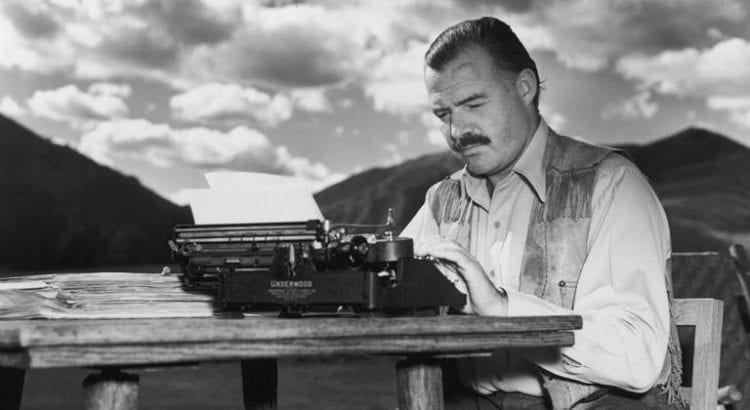
List-ish: Five writer’s tools to get you motivated this weekend
John Legend interviews Ta-Nehisi Coates about writing
Hemingway App
Paste your copy into this app and it will help you break up dense copy, slay passive voice and find alternative sentences that are easier to read. H-man, it seems, was onto something. Verbose prose is so 19th century.
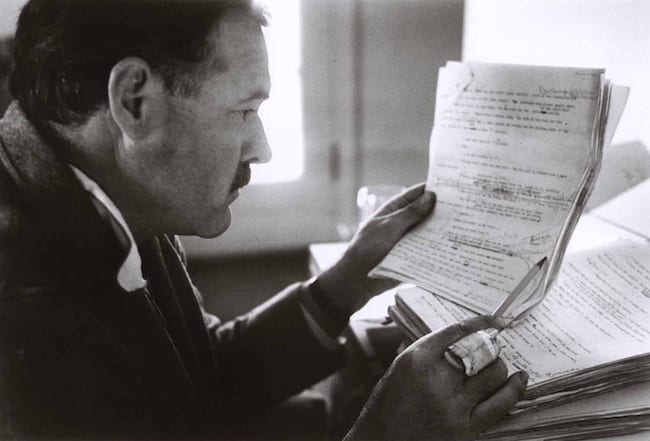
Story Grid Podcast
Gah. I just can’t bring myself to pay for an MFA in creative writing. Not after finally getting my bachelor’s paid off after nine long years of monthly bills. Thus, I’ve had to find other educational tools about writing a good story. This podcast is definitely one of the best I’ve come across. In each episode, a publishing world vet and a fledgling author discuss the formula for a good novel—the story grid. It’s full of practical advice I’ve never heard before (like how knowing your genre can be more important than knowing the backstory of your characters).
Helping Writers Become Authors (dot com)
The site’s design is a little overwhelming, and nearly every gad dang link opens a new tab, but hang in there. HelpingWritersBecomeAuthors.com has A LOT of great information and tools for new writers. I’m all for taking short cuts without cutting corners. Here’s an example of a helpful structure chart to use when you’re outlining.
The Starbucks App
Three things. 1) It gamifies your coffee addiction, letting you rack up rewards through the app. 2) It tells you what song’s playing in your store so you can save it on Spotify and listen later (or Google the lyrics because you’re an emotional sap… raises hand…). 3) This.
Inspo: “The Trespasser,” Chicago in the forties, and words on the street
This paragraph by Tana French
As seen in her new novel, “The Trespasser.” I have loved TF since “In the Woods” came out in ’07. Her work’s a great example of how commercial writing’s intrigue and literary fiction’s finesse can live in one hell of a thriller. I’m a quarter of the way through this new book. While I typically re-read her paragraphs a couple times because I’m struck by how she manages to say so much in four or five sentences, this one is worth pointing out. It’s one of the freshest descriptions I’ve ever seen a no-bullshit female character.
Found Chicago-in-the-summer footage
Summer, can you hear me?! This is must-watch research material for anyone writing a story about Chicago during this time period. Everyone else, take a hit and hit play. 😉
Words on the street (and the paid content bar)
This ad for the tattoo exhibit at the Field Museum made me look twice. Clever.
And then this. Too soon? #whocanturnthegraveoverwithhersmile
Inspo: Words on the street
As seen at a house show.
Just when I thought I’d seen every spirits sandwich board sign in the books, this one shows up.
Love this trend of showing recipes right on the product’s package. It’s hard to see from this pic but there’s an arrow and copy that points to the Triscuit topping. “Top with cottage cheese, peas and mint,” for example.
Brute is my new favorite word! Although, points deducted for “raw”…. eeee….
Interview: 10 questions for Author Rich Garon
Who better to translate the DC roller coaster into a great political fiction than someone who has spent decades enmeshed in the gridlock of the country’s capital?
Rich Garon is just the guy.
In the eighties and nineties, Garon worked as chief-of-staff of the US House Committee on International Relations. When he retired, he began writing books to capture the stress and struggle of policy work, but also the incredible good deeds that can come it.
Clearly his life’s earlier work affected his writing — from the character development of his stories to the fact that he’s donating all the proceeds of his debut novel, “Felling Big Trees,” to WhyHunger?, a non-profit organization that works to fight hunger and poverty across the globe.
“Felling Big Trees” is set in the 1990s and follows a disgraced and widowed congressman who seeks redemption in America’s heartland. Small-town anonymity intrigues him as he recovers from political disaster and tries to free himself — and his teenage daughter — from the grips of his politically powerful mother in law.
A story of romance, power and second chances, “Felling Big Trees” proves that compassion and tolerance are not only possible in a time of strident tone, but essential for survival.
Below, Garon answers 10 questions about his work and writing style. Purchase the book here, and continue following the “Felling Big Trees” blog tour tomorrow over at A Sky Filled With Sparkling Stars.
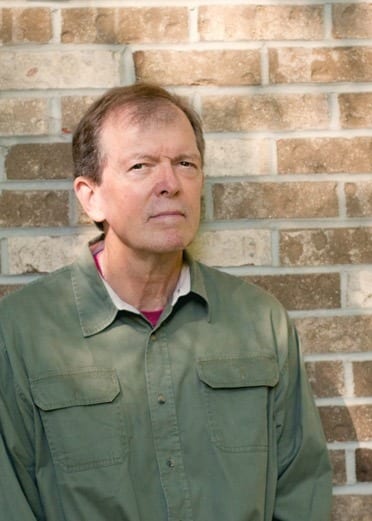
Did your work as a chief-of- staff for the US House Committee on International Relations influence your work on Felling Big Trees? How so?
Yes, it did. In that position, I had the opportunity to be involved in policy-making on some of the critical issues of the day, such as arms control, human rights, and development assistance issues. Working on Capitol Hill for more than 25 years also gave me first-hand knowledge about how things worked, and an insight into the personal lives of members of Congress, such as how they juggled family with the demands of the job.
What inspired you to write Felling Big Trees?
I believed some of the things I referred to above were worth sharing. I had just retired from my position on Capitol Hill and I thought I could bring an authenticity to things I wrote about in a novel. Themes in the book, such as helping those with few resources and stepping out from apathy when large problems demand action, were themes I wanted to share.
How did you marry compassion and tolerance with a story that also has intrigue and pace?
I believe the essence of a good policy-maker is compassion — a concern for those who need help. I tried to develop characters whose actions could show the importance of compassion against a backdrop of forces that challenged and threatened these individuals. Felling Big Trees is also a romance novel, showing how two individuals develop a relationship of love and hope. It also showcases the importance of father-daughter relationships.
Why use writing as a tool to support ending hunger?
I’ve learned it is important to use as many platforms as possible to make people better aware of some of the larger problems facing our society. From that awareness can come a political will to work with others to develop policies to help end these problems. I first worked with WhyHunger over 40 years ago when it first started bringing attention to the hunger issue. It is a great organization that has been tirelessly working to reduce hunger and poverty. Accordingly, I decided to donate proceeds from the sale of this book to WhyHunger.
What is the biggest misconception about homelessness or hunger in America?
I don’t believe the scope of either problem is well known. While we have made some advances in the past, there are far too many who suffer from homelessness and hunger.
When and where do you write? Have you found you work better on a schedule or did you write when you felt motivated?
I write at home and prefer to start in the early morning. In my case, I’ve found that I have to write every day, usually till mid-day. There are other times when a great idea occurs or when I’ve realized something I’ve written just doesn’t work. I’ll jot down some notes and work on it when I’m back at the computer.
While working on this book, did you ever experience writer’s block or become stalled in your writing? If so, when and how did you push through it?
Yes, more than once. There are so many things involved in a novel of close to 300 pages. Characters, scenes, plots, so many things must tie together. Sometimes you can make quick-fixes. However, you’re often faced with major rewrites that you just have to accept and develop.
Do you have any tips for writers on how they can channel their life experience into their storytelling?
I found it’s the little things that make for compelling stories. Some small things you can remember about a person or place that are described well can make for a good read.
Will you write another novel?
I have three completed manuscripts (one’s a children’s book) and I hope to have them published.
If you could invite three people, living or dead, to a dinner party. Who would you invite and why?
C.S. Lewis, Graham Greene, and Jesus. The first two are my favorite authors; their writing skill and intellect never cease to amaze me. Jesus has also had a profound impact on their lives and on mine as well.
